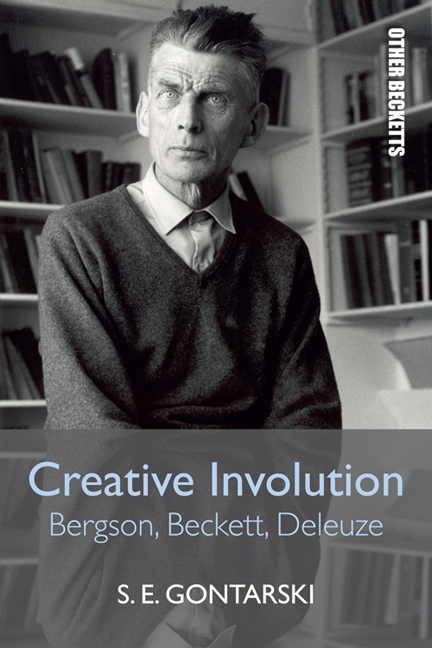Book contents
- Frontmatter
- Contents
- Dedication
- Other Becketts: Series Preface
- Abbreviations for Works
- Acknowledgements
- 1 ‘All the Dead Voices’: A Preface
- 2 ‘A Mixed Choir’ from The Ditch of Astonishment: An Introduction
- Anteriors
- Interiors
- 5 Towards a Creative Involution
- 6 ‘What it is to Have Been’: Movement, Multiplicity and Representation
- 7 Beyond the Shadow: Acts of Unceasing Creation
- 8 A Theatre of Deterritorialization and the Questions We Ask
- Posteriors
- Index
5 - Towards a Creative Involution
from Interiors
Published online by Cambridge University Press: 05 August 2016
- Frontmatter
- Contents
- Dedication
- Other Becketts: Series Preface
- Abbreviations for Works
- Acknowledgements
- 1 ‘All the Dead Voices’: A Preface
- 2 ‘A Mixed Choir’ from The Ditch of Astonishment: An Introduction
- Anteriors
- Interiors
- 5 Towards a Creative Involution
- 6 ‘What it is to Have Been’: Movement, Multiplicity and Representation
- 7 Beyond the Shadow: Acts of Unceasing Creation
- 8 A Theatre of Deterritorialization and the Questions We Ask
- Posteriors
- Index
Summary
That's not moving, that's moving. (Whoroscope 40)
But if he could say, when the knock came, the knock become a knock, or the door become a door, in his mind, presumably in his mind, whatever that may mean. (Watt 77)
To elicit something from nothing requires a certain skill. (Watt 77)
In their critique of Sigmund Freud's (psycho)analysis of the Wolf-Man in A Thousand Plateaus, philosopher Gilles Deleuze and psychoanalyst Félix Guattari take on the methodology and ideology of psychoanalysis, which they deem ‘a mixed semiotic: a despotic regime of significance and interpretation’ (Deleuze and Guattari 1987: 125), and so they take on much of the regime of Modernism itself. For Deleuze and Guattari, Freud misreads the Wolf-Man's narrative, imposing nominalist, patriarchal presuppositions on the narrative's multiplicity, reducing an assemblage to the name of the Father, or the name of the Wolf-Man, in the crafting of a coherent, unified subconscious. Deleuze and Guattari replace the constrictive unity of psychoanalysis with its emphasis on the subconscious with the multiplicity of schizoanalysis and its emphasis on the unconscious. Freud's misreading confuses the two, the unified subconscious with an unconscious as assemblage that is ‘fundamentally a crowd’ (29), an analysis of Freud that parallels Deleuze's critique of Heidegger's Sein. In their analysis Deleuze and Guattari are careful to distinguish between, in its Bergsonian echo, the simple multiplicity of space, ‘numerical or extended multiplicities’, and that of the assemblage with its ‘qualitative’ multiplicities (33). They will use a variety of terms to distinguish between a multiplicity which is a sequence or series, to which one can always add another entity, an N+1, say, and ‘rhizomatic multiplicities’ or ‘molecular, intensive [as opposed to extensive] multiplicities’ which are non-totalizable. Within that assemblage, that crowd, the Wolf-Man, as pack, as qualitative multiplicity and molecular process rather than molar entity, is apprehensible as it ‘approaches or moves away from zero’:
Zero is the body without organs of the Wolf-Man. If the unconscious knows nothing of negation, it is because there is nothing negative in the unconscious, only indefinite moves toward and away from zero, which does not at all express lack but rather the positivity of the full body as support and prop (‘for an afflux is necessary simply to signify the absence of intensity’) (Deleuze and Guattari 1987: 31)
- Type
- Chapter
- Information
- Creative InvolutionBergson, Beckett, Deleuze, pp. 93 - 114Publisher: Edinburgh University PressPrint publication year: 2015



